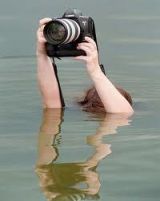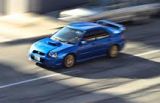- Forum
- General Discussion | Introductions | Off Topic Forum
- Photography General Discussion
- Working on my flash photography and need some help
Working on my flash photography and need some help
-
 Topic Author
Topic Author
- The Gardener
- Photography Hooked
-
- D300
- Followers: 94
- Posts: 654
-
Points:
2438
Post #25656
I found if I go to what the camera says as correct exposure the spotlight effect on my subject isn't happening, everything get's exposed. I'm looking for the way that even during bright light (daylight) I can make my subject look as if under spot light and looking good and rest of the surrounding get's underexposed and looks dark. Does that sound right?
Help please
-

- Todd Knight
- Snapobsessed
-
- Canon 7D
- Followers: 63
- Posts: 431
-
Points:
1334
Post #25674
aperture= Guide number (GN at ISO 100:m/ft) x ISO sensitivity factor divided by shooting distance (m/ft)
I had to look it up.
-

- Stealthy Ninja
- Moderator
-
- Fuji X stuff and a 1DsIII for some reason
- Followers: 982
- Posts: 16300
-
Points:
6837
Post #25713
With flash. The aperture determines the amount of ambient light in a shot (as does ISO and shutter speed). Then the flash lights the subject (depending on various things). So if you use M for flash, it assumes the flash is the main lighting and will control the flash output as such. Then you can maniuplate the Aperture, SS and ISO to get the ambient light the way you want (dark background or lit). Generally I go 1 stop or so below perfectly exposed for ambient and let the flash sort out the subject lighting.
Shutter speed doesn't actually stop the movement of the subject when using flash, the flash will do this. However you might get movement blurring on the edges, sometimes in the reverse position it should be (like if you're photographing a car, the lights of the car might be out the front instead of the back) this is where you use reverse curtain sync or whatever your camera manufacturer calls it. This'll put the blurred sections of the photo behind the subjects motion where it should be (if your SS is too low).
Outdoors I use A or perhaps S mode. In these modes the camera assumes it's being used as fill (to fill in shadows) which is sorta what you want to use it for outdoors.
Hope that makes sense
P.S. your flash will also have a maximum sync speed (depends but usually it's around 1/200 or 1/250 see your manual for more information. You can overcome this by setting your camera to high speed sync, which will fire a series of very rapid bursts from the flash while the shutter moves over the sensor. This is useful when using your camera outdoors when you want a wide aperture for a blurred background.
-

- effron
- Newbie
- Followers: 1623
-
Points:
129640
-
 Topic Author
Topic Author
- The Gardener
- Photography Hooked
-
- D300
- Followers: 94
- Posts: 654
-
Points:
2438
Post #25823
Area's that I'm still cloudy at is how to calculate or what do you I put my shutter speed at? Thanks so much!
Post #25924
Todd Knight wrote: I'm no pro with a flash, but if I do recall there is a formula for determining correct aperture while shooting in manual mode.
aperture= Guide number (GN at ISO 100:m/ft) x ISO sensitivity factor divided by shooting distance (m/ft)
I had to look it up.
Gotta love math.
-

- Stealthy Ninja
- Moderator
-
- Fuji X stuff and a 1DsIII for some reason
- Followers: 982
- Posts: 16300
-
Points:
6837
Post #26131
The Gardener wrote: Very good information guys, thanks so much. I'm finding the information I was after. So I'm reading all of this and yet don't see where you calculate shutter speed? With my SB800 in manual mode I have found how calculate for correct exposure, how to obtain the correct flash output level and to calculate the shooting distance.
Area's that I'm still cloudy at is how to calculate or what do you I put my shutter speed at? Thanks so much!
You need some sort of light meter to get it right. Personally I use the one built into the camera.
Then if you're using manual of camera flash, you adjust the output of the flash till it exposes correctly. Like I said, set you SS for the ambient light (about one stop less than perfect). Then set your flash output for 1 stop of light. Adjust from there.
- Forum
- General Discussion | Introductions | Off Topic Forum
- Photography General Discussion
- Working on my flash photography and need some help
Latest Reviews
The Canon EOS R100 is an entry-level mirrorless camera introduced in 2023. But just because it’s an entry-level camera doesn’t mean it’s a bare-bones camera. Find out why in this review!
Nikon’s retro-looking Nikon Zfc is anything but retro. Under its classic body is a host of features and amenities that make it a worthwhile compact mirrorless camera for 2024.
The Canon EOS R50 is one of the newest R-system cameras from Canon. Is it worth your money? Find out all the details you need to know in this comprehensive review.
The Sony FE 70-200mm f/2.8 GM OSS II is Sony’s flagship mirrorless zoom lens. As such, it’s loaded with features and has a top-shelf build quality that makes it a top pick!
Latest Articles
Using leading lines in photography helps improve the composition by drawing viewers in and leading their eye from the foreground to the background. Explore some fine examples of this in this guide!
The Insta360 has one of the best lineups of action cams and 360-degree cameras. With these Insta360 accessories, you can elevate your photography and videography game!
Creating impactful photos of landscapes depends on many factors, not the least of which is your talent behind the lens. This guide explores other elements required for the best product.
The Canon EOS R100 is an entry-level mirrorless camera introduced in 2023. But just because it’s an entry-level camera doesn’t mean it’s a bare-bones camera. Find out why in this review!
Are you ready to upgrade your camera? Before buying new, you might consider the value of purchasing used gear to save money.
The Olympus OM-D E-M10 Mark IV is a micro four thirds camera released in 2020. It’s an entry-level system along with the OM-D E-M5 Mark III. Use this guide to determine which one is best for you!
Blue hour photography might not be as well known as golden hour photography, but it is every bit as good a time to create epic images of landscapes. Learn how in this quick tutorial!
Nikon’s retro-looking Nikon Zfc is anything but retro. Under its classic body is a host of features and amenities that make it a worthwhile compact mirrorless camera for 2024.
















